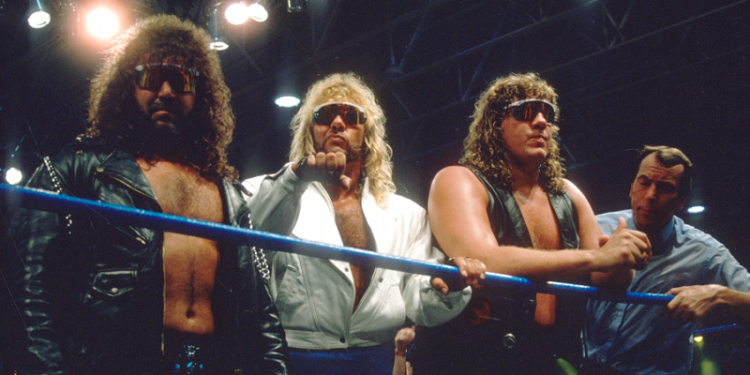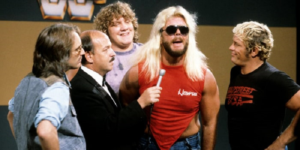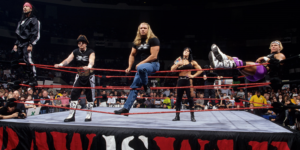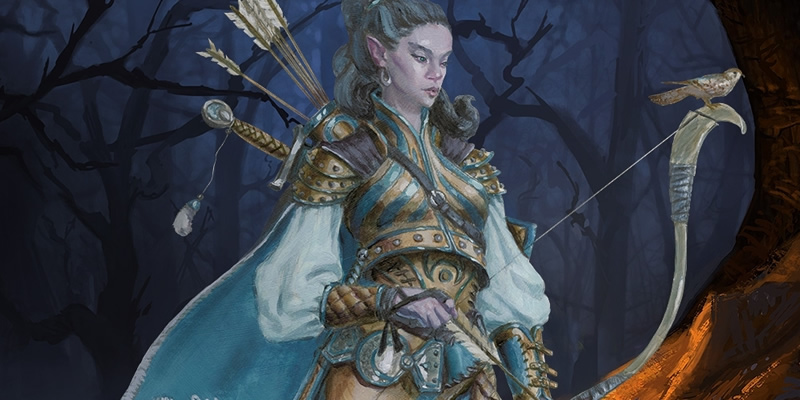Rotating Rosters, Stables, and the Fabulous Freebirds

“I got that diaper money. I’m a grown-ass man.” – The Lonely Island
As the inexorable march of time continues – drawing closer to the hour of our inevitable demise – it’s harder and harder to have consistent in-person games. The boom of online tabletops has been fantastic – Roll20 is my particular brand of choice, thanks Kickstarter backer status! – and I have been running a regular game online for over a year now. The primary benefit of the virtual tabletops is just that – they are virtual. My game consists of people in Tennessee, Maryland, North Carolina, and Georgia. That said, it’s just not the same as running an in-person game. It’s still excellent and allows for a lot easy integration of things that are more complicated in person, but getting everyone in a room and playing it’s not. I have a plethora of friends locally and love playing in – and running games for – them. Building terrain, creating objects, painting minis, and the group food experience are all things that just don’t transfer well when people are virtual rather than physical. Different strengths and weaknesses, ya know? The biggest weakness of the in-person game at this point in our lives is the inconsistency of the schedule. Most of us have children. We have disparate family and friends that want to see our children. We have jobs we go to and travel for in order to provide for our children. We spend our free time going to the park or zoo with our children. Man, children are the worst – except for the fact they are the best (no judgement if you are sans children, of course)! If we were trying to get the same people together each time we were trying to play in person, it would be literal months before we could play. This isn’t a big deal, but it makes campaign play – something we all enjoy – much more difficult. We are only able to make some of each other’s games, and have to drop in and out of the story as we go. In order to make it so we can enjoy playing as much as possible we – two other GMs and myself – have taken a queue from one of the most iconic wrestling tag teams of all time…the Fabulous Freebirds.

I don’t use the word “iconic” lightly. The Fabulous Freebirds might have the most enduring tag team legacy of any tag team ever. For the uninitiated, tag teams are generally groups comprised of two wrestlers – sometimes remaining as separate solo acts working together (Hulk Hogan and Randy Savage), and sometimes as team acts (The Road Warriors). The Fabulous Freebirds were tag team formed in 1979, themed around the Deep South – inspired by the Lynyrd Skynyrd classic, obviously. They even used the song as their entrance music until copyright infringement started to be enforced in wrestling in the mid-80’s. Think Dukes of Hazards in a wrestling ring and you wouldn’t be far off the mark. The tag team was put together by Bill Watts – promoter of Mid South Wrestling – and consisted of Michael “P.S.” Hayes, Terry “Bam Bam” Gordy, and Buddy “Jack” Roberts. Having three members on a tag team was considered highly unusual back in those days, and is still rare in the current day. In order to make the concept work, they invented a new rule for them to compete under: only two members of the team could compete at a time, but any two of them may compete for any contest – including contesting and defending championship titles. This became known at the Freebird Rule.
The Fabulous Freebirds – despite having three team members – weren’t really a wrestling stable. A wrestling stable is a group of wrestlers working together for a specific goal or purpose – typically in support of the other members – in an unofficial capacity. The “unofficial capacity” part of that is big, as the storylines often involve people interfering in matches, handicapping matches, and working to ensure their stablemates are successful. The Shield was a stable instead of a team like the Fabulous Freebirds, for example. Dean Ambrose was pushed as the solo act – winning the United States Championship – while Seth Rollins and Roman Reigns won the WWE Tag Team Championship. The stable didn’t compete under mixed pairs – Rollins/Ambrose or Ambrose/Reigns – to defend the tag title. The difference is important – as the stables are examples of individual stories that have crossover, while the three-man tag group has rotating members involved in the same story. They are unique personalities, but they are aligned in purpose.

Of the three games I mentioned above – the two I play in and the one I DM – we all have open rosters where any 4-7 of the list of 10+ people might attend any one game. We often won’t know until the week of – even if you schedule the games months ahead of time – and thus face the challenges therein. One of the games is firmly a “stable” game, while the other two are “Freebird Rule” games. Let’s look at both in their approaches to:
- Roster Management
- Storylines
- Adventures
- Player Agency
At first glance, it would seem like there is little difference between the stable and Freebird Rule approaches to tabletop roster management. Each just has a group of players and the game runs with the players who are able to attend the game. Easy peasy. However, it’s not actually all that cut and dry. Wrestling stables see people drop in and out of them all the time, and often vary wildly in size. The Freebird Rule teams have a set list of team members, though only so many can participate at one time. The game I would consider a stable game has a wide variety of players – and most of those players have several characters from which to choose in any given game. The stable approach puts the emphasis on the character roster rather than the player roster, while the Freebird Rule approach does the opposite. Thus, a roster of ten players might actually be a roster of twenty to thirty characters. The Freebird Rule game is almost certainly going to have ten players and ten characters. The differences in roster-emphasis are absolutely a result of how the storylines and adventures within the games unfold – shaking out from the gameplay needs.

The stable and Freebird Rule games vary on a fundamental storytelling level – each emphasizing the strengths of their roster approaches. The stable game is focused on the world first, specific character interactions in that world second, and then the group dynamic of interactions with that specific character third. In wrestling terms, each session tends to have someone be Dean Ambrose while the rest of the party is Seth Rollins and Roman Reigns. Rollins and Reigns absolutely get involved in the storylines, but it’s due to the interactions with Ambrose when it comes to a storyline about the WWE Championship. If the story is about the Tag Team Titles, then Ambrose is the ancillary one in the situation. Each of them interact with the other stories and play crucial parts in the twists and turns, but it’s precipitated by one side or the other. The other two games emphasize singular, unified stories that have branching opportunities – the opposite of the stable. One game focuses on the world itself, with the players exploring and engaging with the world through the choices we make – but always in the pursuit of a unified goal. While the game I run can most easily be explained as “Planescape Stargate Universe,” as a way to simplify it. The individual missions are there to grow and challenge the characters about why they are there and how they are dealing with it rather than a world-centric story. However, the fact they are ALL there is the method of story unification. Three different stories, two in the in the same vein, and one in another.
The rosters and storylines also play directly into the adventures themselves. The campaign theme or stories might be markedly different than the adventures the characters find themselves embroiled in. Case in point, in the online game I run the players have been exploring the history of a haunted island, but the game isn’t about that – it’s about the family trying to regain their honor after their shipping industry suffered a devastating kraken-related accident, leaving them destitute. Adventures in the stable game build upon the storyline mechanisms mentioned above. They are initiated by specific characters in service to specific goals – even if the goal is often “we are poor and want to not be poor, so let’s take some jobs.” There are piece-parts within the adventures for specific characters, but always in service to the world. Even more importantly, an adventure might span multiple sessions. A group of adventurers might be locked into an adventure up north, but those players aren’t available for the next session. The ones that are pick another character to play and get them embroiled in the next adventure. When group A gets back together, that story continues. This can be complex, but it speaks to the nature of the story and the world – everything marches forward, and we do what we can. On the flipside, the Freebird Rule games work exceedingly hard to make sure every adventure is able to be completed within the timeframe – or at least reach a point where the group can change up mid-adventure. The game I run features a ship that is also the “home base,” and the other game features a method to travel through magical portals. Each achieve the same goal – allowing the game to continue without needing the exact same roster. This leads to each adventure being a series of discrete goals that can be compartmentalized and achieved – not unlike an “X of the Week” show format – albeit with broader subject matter.

Finally, the ways in which player agency is support vary in minor – but important – ways based on the two roster methodologies. The stable relies on player investment and motivations to drive the interactions with the world/story. The world is going to do its thing, and is there to be acted upon by the players. Once the initial interaction occurs, all sorts of stories and adventures kick off linked to those individuals and then spider web out from there. For example, Dean Ambrose’s wins put him in a situation to compete against Daniel Bryan for a shot at the United States Championship title, precipitating an attack on him by the current United States Championship holder – Kofi Kingston. Meanwhile, the Freebird Rule again almost flips it around entirely. The players will drive what the world ends up looking like, as it is discovered by their actions. Sure, the world will operate how it is going to operate, but it’s the players acting upon it initially that provides the catalyst for the action. Another way to state it is that the action is always occurring just off-screen until the cameras that follow the players captures it. A great example of this in action is the New Day. The New Day are a Freebird Rule tag-team that is currently active in the WWE. The New Day showed up and challenged the current tag-team champions, thus starting a feud with them. Until that point, the tag-team champions were going to do whatever they were going to do, and would not have acted upon the New Day. It is the New Day acting in the first place that leads to the action focused on them.
Rotating rosters is not the easiest thing in the world to run, but for people who find themselves beset by the challenges of life on all sides it is an opportunity to play in games without impacting the story of the game in a negative way. Both the stable and the Freebird Rule approach to roster management are conscious decisions that need to be made at the outset, as they absolutely impact every other aspect of the way the game is going to run. Neither is the “worse option.” They are just different, and you need to be certain the roster management methodology is the one you want to support the game you are running. As long as you do that, you will end up in a good place, and the pieces will likely end up shaking out as mentioned above – regardless of the skins you put over the framework.



